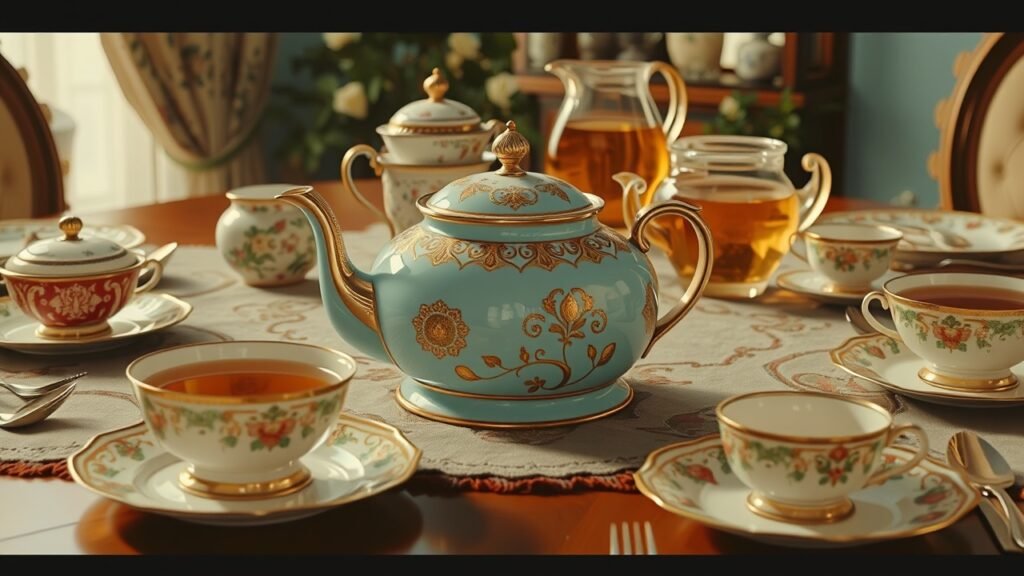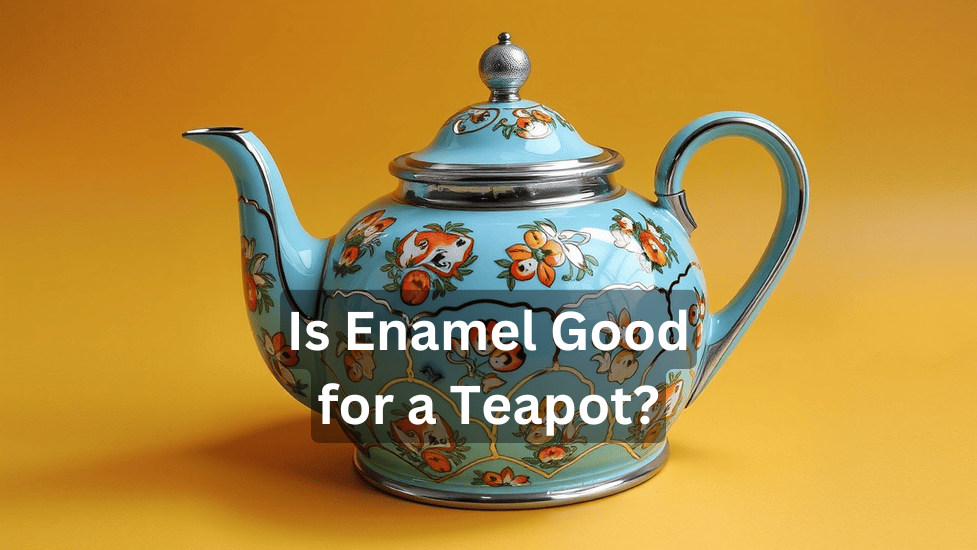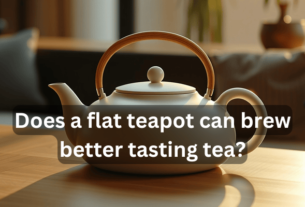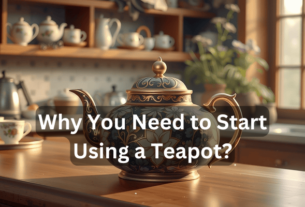Is Enamel Good for a Teapot? When it comes to brewing the perfect cup of tea, the choice of teapot is just as essential as the quality of the tea leaves themselves. Among the many types of teapots available on the market today, enamel teapots have become increasingly popular. With their vibrant colors and charming designs, they can make a delightful addition to any kitchen or tea set.
However, many tea lovers often find themselves wondering, “Is enamel good for a teapot?” In this article, we will explore the benefits and drawbacks of enamel teapots, compare them to other materials, and ultimately guide you in determining whether an enamel teapot is the right fit for your tea-drinking habits.
The History and Significance of Enamel Coating on Teapots
Tea lovers, history buffs, and design enthusiasts, gather around as we unravel the tale of enamel in teapot evolution. From ancient origins to modern-day innovations, enamel has been a constant companion, preserving traditions and enhancing tea-drinking experiences.
Tracing the Origins: Evolution of Enamel in Teapot Design:
Travel back in time with us as we trace the roots of enamel coating on teapots. Discover how this ancient art form has evolved, painting teapot histories with vibrant colors and protective shields that stood the test of time.
Enamel’s Role in Preserving Tea Flavor and Heat Retention:
Ever wondered why your tea tastes just right even hours after brewing? Enamel coating isn’t just for show—it’s a flavor-locking, heat-retaining superstar. Uncover how enamel keeps your tea piping hot and bursting with flavor, sip after sip.
Benefits of Enamel Teapots
1. Heat Retention:
Enamel teapots are excellent at retaining heat. The enamel coating provides a barrier that helps to keep the tea warm for longer periods. This is especially beneficial for those who enjoy leisurely tea sessions.
The metal core of enamel teapots, often made from materials like cast iron or stainless steel, further enhances their heat retention properties.
2. Easy to Clean:
One of the standout features of enamel teapots is their ease of cleaning. The smooth, non-porous surface of enamel prevents tea stains and residues from sticking, making it simple to rinse and wipe clean.
Unlike porous materials like clay, enamel does not absorb flavors or odors, ensuring that each brew tastes fresh and untainted by previous teas.
3. Aesthetic Appeal:
Enamel teapots are available in a wide range of colors, patterns, and designs, making them a delightful addition to any kitchen or tea table.
The glossy finish of enamel adds a touch of elegance and charm, and the variety of styles allows tea enthusiasts to choose a teapot that reflects their personal taste and style.

What is The best Teapot for Wuyi Tea? Unique Info 2024..
4. Durability:
Enamel is highly durable and resistant to scratches, chipping, and corrosion. When properly cared for, enamel teapots can last for many years, making them a worthwhile investment.
The protective enamel layer shields the underlying metal from rust and damage, ensuring the teapot remains functional and beautiful over time.
5. Non-Reactive Surface:
Enamel provides a non-reactive surface that is safe for brewing tea. This means that it does not interact with the tea or alter its flavor.
Unlike some metal teapots that can impart a metallic taste, enamel teapots maintain the purity and integrity of the tea, allowing you to enjoy its natural flavors.
Comparing Enamel Teapots to Other Materials
To give you a clearer picture of how enamel teapots stack up against other popular teapot materials, let’s compare them to glass, ceramic, and stainless steel.
Enamel vs. Glass Teapots:
- Durability: Glass teapots are often more fragile than enamel teapots. They can break easily if dropped and require careful handling.
- Aesthetic Appeal: Glass teapots allow you to see the brewing process and enjoy the visual appearance of tea leaves and colors. In contrast, enamel teapots are often colorful but don’t offer a view of the inside.
- Heat Retention: Glass teapots may not retain heat as long as enamel ones. If you like your tea hotter for longer, enamel might be the better choice.
Enamel vs. Ceramic Teapots:
- Weight: Ceramic teapots tend to be lighter than enamel, which may be preferable for some.
- Taste: Ceramic is less likely to affect the taste of the tea, whereas enamel can sometimes impart a flavor.
- Style Variety: Both materials come in various designs, but ceramic teapots also often have traditional and artisan styles.
Enamel vs. Stainless Steel Teapots:
- Heat Retention: Stainless steel heats up quickly but doesn’t retain heat as well as enamel. If you enjoy warm tea, enamel may be favorable.
- Cleaning: Stainless steel is also easy to clean, but enamel is often seen as easier due to its smoother surface.
- Aesthetic: Enamel offers a more vintage and decorative look, while stainless steel is sleek and modern.

Why Do You Need a Teapot? 2024..
Is Enamel Good for a Teapot?
How to Care for Enamel Teapots
Proper care is essential to maintain the beauty and functionality of enamel teapots. Here are some tips to help you care for your enamel teapot:
1. Avoid Abrasive Cleaners:
Use mild dish soap and a soft sponge or cloth to clean your enamel teapot. Avoid abrasive cleaners and scrubbers that can scratch the enamel surface. If stubborn stains persist, soaking the teapot in warm soapy water can help loosen them.
2. Handle with Care:
To prevent chipping, handle your enamel teapot with care. Avoid dropping it or banging it against hard surfaces. When not in use, store it in a safe place to protect it from accidental damage.
3. Avoid Sudden Temperature Changes:
Enamel can be sensitive to sudden temperature changes, which can cause the coating to crack or chip. To prevent this, avoid pouring boiling water into a cold teapot or placing a hot teapot on a cold surface.
4. Use Non-Metal Utensils:
When stirring or serving tea, use non-metal utensils to avoid scratching the enamel surface. Wooden, silicone, or plastic utensils are gentle on the enamel and help preserve its smooth finish.
Conclusion
Is Enamel Good for a Teapot? The journey of tea drinking is as rich as the beverage itself. Different cultures have embraced tea differently, and with them, they have adapted their teapots as well. In some cultures, such as in China and Japan, the art of tea brewing and serving is considered a ritual, influencing their choice of teapots. While enamel teapots may not be traditional in these cultures, they offer a contemporary twist that can still enhance the tea experience.
Exploring the world of tea through different materials and methods will only deepen your appreciation for this age-old beverage. Whether you prefer green, black, herbal, or specialty teas, choosing the right teapot is a step toward making your tea experience even more enjoyable.




Заказать Haval – только у нас вы найдете цены ниже рынка. Быстрей всего сделать заказ на купить хавал джулиан можно только у нас!
[url=https://jolion-ufa1.ru]haval jolion купить уфа новый[/url]
haval джолион – [url=http://jolion-ufa1.ru]https://jolion-ufa1.ru[/url]
Impressive writing; your passion for the topic is apparent.
Thank You.
I love the tangible suggestions you’ve included; it makes implementing your advice easier.
Thank You 😊